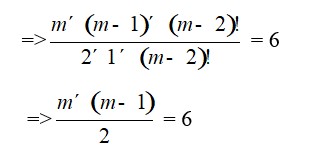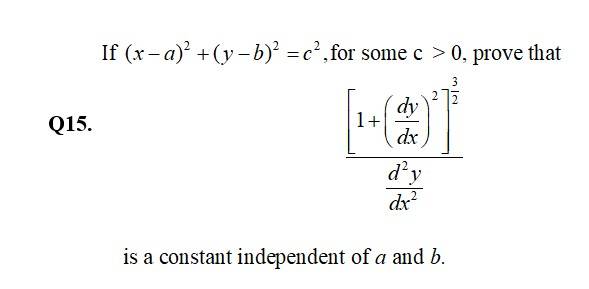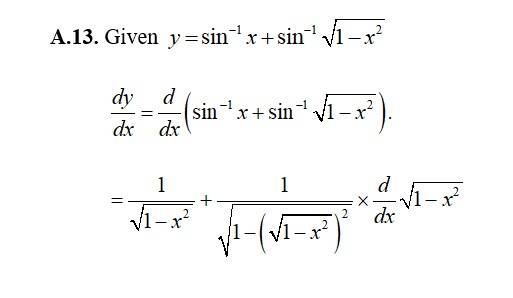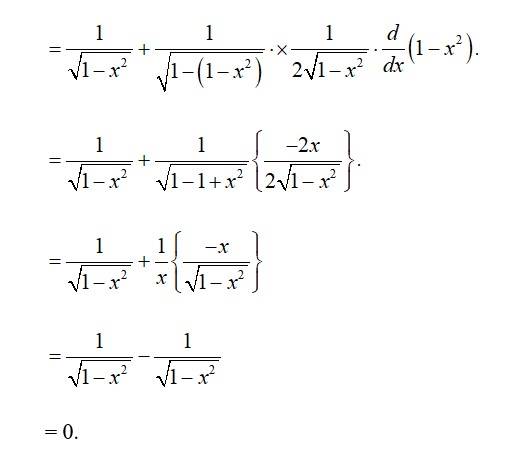Maths
Get insights from 6.5k questions on Maths, answered by students, alumni, and experts. You may also ask and answer any question you like about Maths
Follow Ask QuestionQuestions
Discussions
Active Users
Followers
New answer posted
6 months agoContributor-Level 10
Differentiating w r t 'x' we get
Again,
Then, L.H.S =
Where c is a constant and is independent of a and b.
New answer posted
6 months agoContributor-Level 10
1.The general term of the expansion (a + b)n is given by
Tr +1 = nCran–rbr
So, T1 = nC0an = an
T2 = nC1an-1b = an-1 b = an-1b = nan-1b
T3 = nC2an-2b2 = an-2b2 = an-2b2 = an-2b2
Given,
T1 = 729
=>an = 729 ------------------ (1)
T2 = 7290
=>nan–1b = 7290 ------------- (2)
T3 = 30375
=> an–2b2 = 30375 ------------------- (3)
Dividing equation (2) by (1) we get,
=
=> = 10
Similarly dividing equation (3) by (2) we get,
an–2b2 ÷ nan–1b =
=> an–2b2* =
=> * = * 2
=> =
=> =
=> 10 – = [since, &
New answer posted
6 months agoContributor-Level 10
11. The general term of the expansion is given by,
Tr+1 = mCr
= mCrxr
At r = 2,
T2+1 = mC2x2
Given that, co-efficient of x2 = 6
=>mC2 = 6
=> = 6

=>m2 – m = 12
=>m2 – m – 12 = 0
=>m2 + 3m – 4m – 12 = 0
=>m (m + 3) – 4 (m+ 3) = 0
=> (m – 4) (m + 3) = 0
=>m = 4 and m = –3
Since, we need a positive value of m we have, m = 4
New answer posted
6 months agoContributor-Level 10
Putting we get,
________(1)
Now,
Taking log,
And
Hence eqn (1) becomes
New answer posted
6 months agoContributor-Level 10
So,
_________(1)
Where
(Taking log)
(Differentiation w r t 'x')
Hence eqn (1) becomes,
New answer posted
6 months agoContributor-Level 10
10. General term of the expansion (1 + x)2n is
Tr+1 = 2nCr (1)2n-r(x)r
So, co-efficient of xn (i.e. r = n) is 2nCn
Similarly general term of the expansion (1 + x)2n–1 is
Tr+1 = 2n-1Cr (1)2n–1–rxr
And co-efficient of xn i.e. when r = n is 2n-1Cn
Therefore,
= 
= ÷
= *

=
= 2
Thus, co-efficient of in = 2x co-efficient of in
Taking an Exam? Selecting a College?
Get authentic answers from experts, students and alumni that you won't find anywhere else
Sign Up on ShikshaOn Shiksha, get access to
- 65k Colleges
- 1.2k Exams
- 679k Reviews
- 1800k Answers










